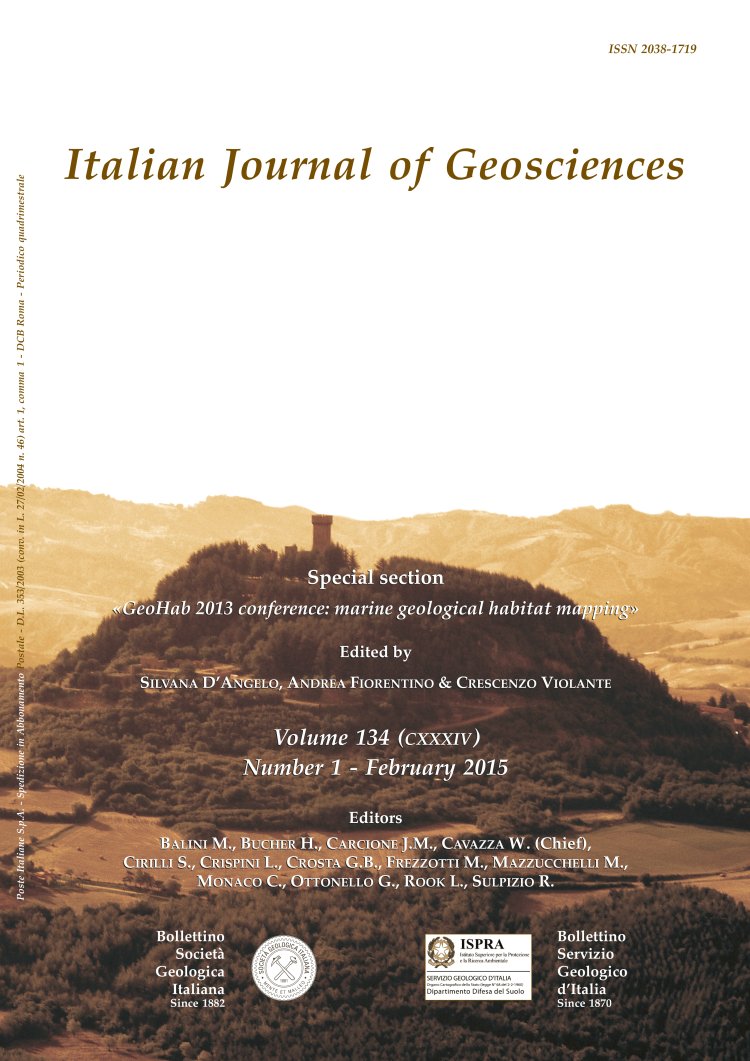
Benthic foraminiferal assemblages in active volcanic area of the Azores Islands (North Atlantic Ocean)
Letizia Di Bella (*), Virgilio Frezza (*), Aida Maria Conte (**) & Francesco Latino Chiocci (*)
(*) Dipartimento di Scienze della Terra "Sapienza" Università di Roma, Piazzale Aldo Moro, 5 - 00185 Roma. Corresponding author: Letizia Di Bella letizia.dibella@uniroma1.it
(**) CNR-IGG-U.O.S. di Roma c/o Dipartimento di Scienze della Terra "Sapienza" Università di Roma, Piazzale Aldo Moro, 5 - 00185 Roma.
DOI: https://doi.org/10.3301/IJG.2014.22
Volume: 134 (2015) f.1
Pages: 50-59
Abstract
The present study shows the preliminary micropalaeontological results obtained from surface samples collected during an Eurofleet marine geological survey in the Terceira offshore (Azores Archipelago, Portugal) carried out in September 2011.
Benthic foraminiferal assemblages were studied in order to obtain a sea-floor ecological characterisation in natural stressed environments like active volcanic area of the Azores Islands. Sediments were collected at water depths ranging between 260 and 410 m and consist of blackish, sand-sized glass shards, in which highly vesicular
to scoriaceous clasts prevail on fluidal striated fragments. All samples were stained with Rose Bengal to determine living and dead assemblages.
The dominance of living specimens suggests that the first generation of foraminiferal colonisers was found. Diversity index (α-Fisher index), Faunal density and Foraminiferal Abnormality Index (FAI) were calculated to assess the structure of the assemblage and the degree of environmental stress. Living and dead assemblages are very
similar; they are very scarce but sufficiently diversified. The living benthic assemblage is dominated by epi/shallow infaunal species Angulogerina angulosa and typical infaunal taxa like Bolivina spp.
Subordinately other epifaunal (Ehrenbergina bradyi, Lenticulina spp., Quinqueloculina seminula, Stomatorbina concentrica) and agglutinated species (Ammoglobigerina globigeriniformis, Eggerelloides scabrus, Haplophragmoides canariensis, Spiroplectinella wrightii, Textularia spp.) are also recorded. Significant frequencies of specimens showing signs of test decalcification were found. These test alterations could be due to hydrothermal fluids, since similar features were recorded in foraminiferal specimens coming from other volcanic substrates in the Aeolian Arc (Tyrrhenian Sea). The dominance of living and dead A. angulosa specimens allows us to consider this species as opportunistic pioneer taxon able to colonise stressed environments. This is confirmed also by the highest values of FAI (>2%), recorded in most of the samples, indicating a persisting environmental stress. Angulogerina angulosa and Bolivina spp. are the species showing more abundant deformed specimens (irregular development of chambers and aberrant tests). On the basis of our observations, the recolonisation process and the spatial distribution patterns are strongly influenced by the sea bottom high hydrodynamic regime which is responsible for volcanic deposit transport and depositional events. These conditions may be reflected on the relationship between benthic foraminifers and substrate features, which are mainly restricted to grain size, morphology and texture of volcanic shards.
Keywords
Get Full Text